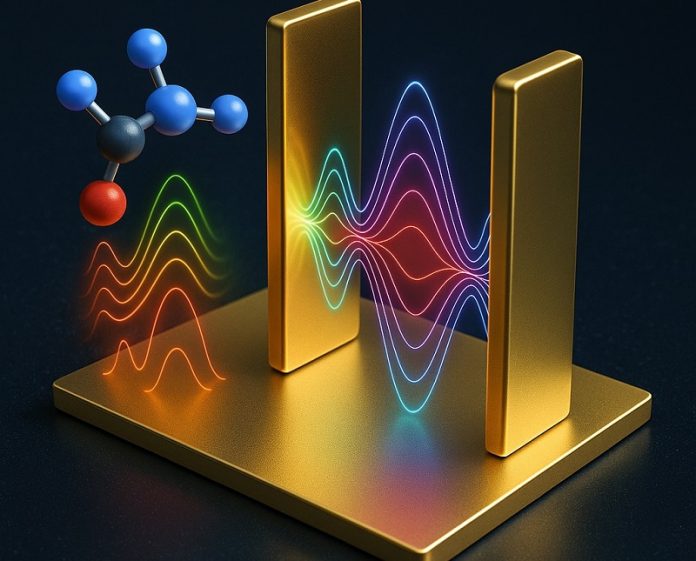
Imagine being able to spot the earliest signs of disease from just a trace of molecules in blood, saliva, or urine—well before symptoms ever appear.
That is the promise of a new breakthrough from Johns Hopkins engineers, who have developed a powerful method to observe molecular vibrations with unprecedented clarity.
Their findings, published in Science Advances, could pave the way for earlier disease detection, safer pharmaceuticals, and more reliable environmental monitoring.
Molecular vibrations are tiny, distinctive movements of atoms within a molecule. Each vibration acts like a chemical fingerprint that reveals what the molecule is and, in many cases, whether it is linked to disease.
Existing technologies such as infrared and Raman spectroscopy are commonly used to read these fingerprints.
However, the signals they rely on are often faint, easily drowned out by background noise, and difficult to interpret in complex environments like blood or tissue samples.
Ishan Barman, a professor of mechanical engineering at Johns Hopkins, led the study. He also holds joint appointments in the Sidney Kimmel Comprehensive Cancer Center and the Department of Radiology and Radiological Science.
Barman explained that the team wanted to go beyond simply tweaking existing methods. “We asked a more radical question: What if we could re-engineer the very way light interacts with matter to create a fundamentally new kind of sensing?”
The researchers turned to quantum physics for the answer. By placing molecules inside an optical cavity made with highly reflective gold mirrors, they trapped light so that it bounced back and forth repeatedly.
This intense interaction between light and molecules caused the two to merge into new hybrid quantum states known as vibro-polaritons. In these states, the molecular vibrations and the confined light field become deeply intertwined, boosting the visibility of the molecular fingerprints.
What makes the work especially groundbreaking is that the team achieved this under everyday conditions.
Typically, quantum states are so fragile that they require extreme environments—such as cryogenic cooling or high-vacuum chambers—to survive. But the Johns Hopkins team demonstrated that vibro-polaritonic sensing can operate in normal lab or clinical settings, making it far more practical.
Peng Zheng, the study’s lead author and an associate research scientist at Johns Hopkins, explained that this work turns the concept of quantum vibro-polaritonic sensing into a functioning platform. By engineering the quantum environment around molecules, the researchers can selectively enhance the signals of interest, making detection more sensitive and precise.
Looking ahead, Barman envisions shrinking this technology into microchip-scale devices. Such sensors could become portable diagnostic tools in clinics or even pair with artificial intelligence for real-time disease detection. Beyond health care, the technology could also transform pharmaceutical manufacturing by enabling real-time monitoring of complex chemical reactions, and in environmental science, by detecting pollutants at trace levels.
“The future of quantum sensing isn’t stuck in the lab—it’s poised to make a real-world impact across medicine, biomanufacturing, and beyond,” Barman said.



